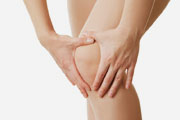What is Platelet Rich Plasma (PRP)
A blood sample is taken from the patient, which is then concentrated by centrifugation, a process in which the blood cells are separated from the blood plasma. The platelet concentrate obtained through this method promotes the release of growth factors that optimize the regeneration and repair of tissues, tendons and ligaments. This technique has a platelet concentration that is about 4 to 6 times higher than the level observed in circulating blood.

PRP Injection
A blood sample of 20 to 180 ml will be taken from the patient and centrifuged to separate the different blood components (plasma, platelets, white and red blood cells). Only a high platelet concentrate will be administered during the injection, which is typically performed under ultrasound guidance. Transient pain or stiffness may be felt during the first week following the injection.
A post injection follow-up will be carried out 3 to 4 weeks after the intervention. If a new injection should be recommended by your doctor, it will be explained to you at that point in time.
Areas treated with PRP
- Knee
- Shoulder
- Hip
- Elbow
- Foot/ankle
Conditions treated with PRP
- Certain types of tendonitis
- Epicondylitis
- Muscle strain
- Ankle sprain
- Osteoarthritis











